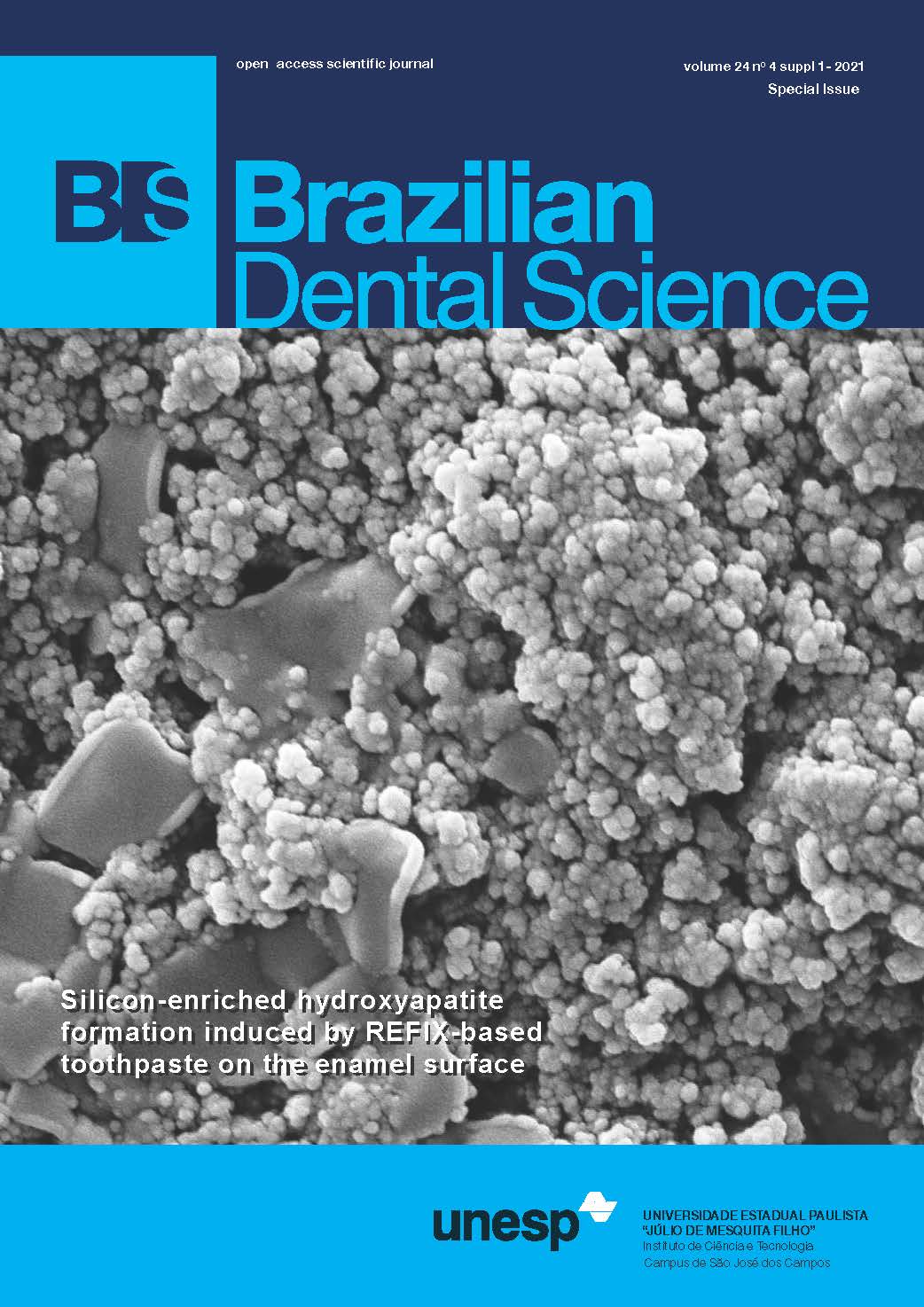Influence of viscosity and chemical composition of composite resins in non-carious cervical restorations: 12-month randomized clinical trial
DOI:
https://doi.org/10.4322/bds.2021.e2792Abstract
Objective: The objective of this double-blind, randomized controlled clinical trial was to evaluate the clinical
performance of two methacrylate-based flowable composite and ormocer-based flowable composite in non-carious
cervical lesions (NCCLs) of adult patients. Material and Methods: 183 restorations were performed on NCCLs
using the Futurabond U adhesive system, applied in the selective enamel etching mode in all cavities. After the
adhesive application, the cavities were restored with one out of the three evaluated flowable composites (n = 61
per group): ormocer-based flowable composite (Admira Fusion Flow, ORM), low viscosity methacrylate-based
composite (GrandioSO Flow, LV) and high viscosity methacrylate-based composite (GrandioSO Heavy Flow, HV).
After 12 months of clinical performance, these restorations were evaluated according to FDI and USPHS criteria
in the following items: retention/fracture, marginal adaptation, marginal staining, postoperative sensitivity and
caries recurrence. Results: eight restorations were lost/fractured after 12 months of clinical evaluation (1 in
the ORM and 7 in the HV group). The retention rates for 12- months (95% confidence interval) were 98.4%
(91.3%-99.7%) for the ORM group, 100% (94.5%-100%) for the LV group and 88.5% (78.1%-94.3%) for the
HV group, with no statistical difference identified between any pair of groups (p > 0.05). Five restorations
presented small marginal adaptation defects at the 12-months evaluation recall, and all of them were considered
clinically acceptable. Conclusion: The clinical performance of the universal adhesive associated to ormocer-based
or methacrylate-based flowable composite were found to be promising after 12-month of clinical evaluation.
KEYWORDS
Dental bonding; Dental restoration; Clinical trial.
Downloads
Downloads
Published
How to Cite
Issue
Section
License
Brazilian Dental Science uses the Creative Commons (CC-BY 4.0) license, thus preserving the integrity of articles in an open access environment. The journal allows the author to retain publishing rights without restrictions.
=================




























